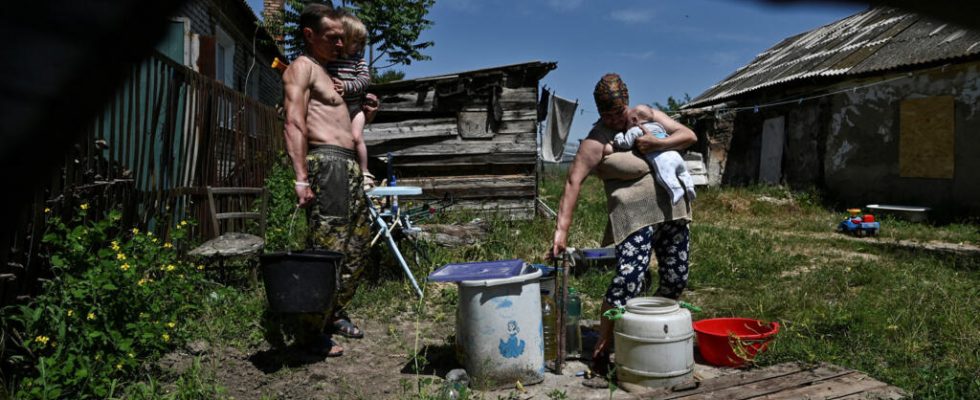In the south of Ukraine, the waters of the river, the Dnieper, are slowly beginning to flow back downstream from the destroyed dam of Nova Kakhovka, although it will take a few more days to measure the extent of the damage on the habitat and ecosystems. Upstream, on the other hand, the situation is different: the reservoir of the Dnieper continues to empty hour by hour, and the consequences are beginning to be felt for the population.
With our special correspondent in Zaporijjia, Stephane Siohan
In Nikopol, the water does not rise, but it descends, irretrievably. In the city on the Dnieper, just opposite the Energodar nuclear power plant, the gigantic reservoir upstream of Nova Kakhovka continues to empty. According to the municipal authorities of Nikopol, the water level has dropped by about seven meters since the disaster.
Consequence: since Saturday, June 10, the premises no longer have tap water, because the level of the Dnieper no longer allows to supply the pumps connected to the treatment plants. The 50,000 inhabitants, half of the pre-war population, are supplied with drinking water from cisterns, at the rate of ten liters per day and per inhabitant.
For the time being, the population is holding out, despite the daily bombardments, which have left sixteen dead and 135 injured in one year. But hour by hour, day by day, the landscape changes: the immense liquid expanse that adjoined the city is no more than a memory, the river finds the bed it had 80 years ago, with rapids, sandbanks, rocky outcrops.
Here and there we see the reappearance of century-old industrial remains that had been submerged since the 1950s. A fascinating spectacle, but in reality dramatic, because the disappearance of the reservoir will permanently disrupt all the water balances, industry, agriculture and life. short.
>> To read also: Russian-held Dnieper Delta shore: Civilians trapped between flooding and gunfire
